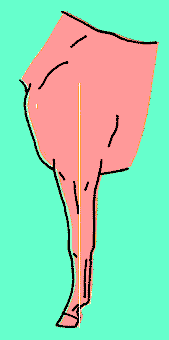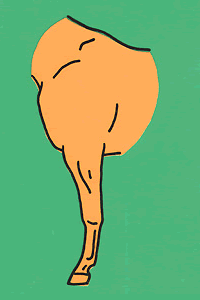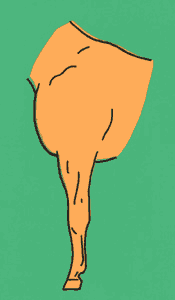
Ashley Griffin, University of Kentucky
When viewed from the side, the front column of bones should have the appropriate slope and angle of shoulder and pastern. Additionally, a straight line should run from the center of the scapula and bisect the leg equally in half, touching the heel of the hoof as pictured in the “ideal” side view.
Camped-under is a condition in which the forelimbs are too far under the horse’s body. This conformational fault will prevent a horse from having a long, fluid stride and predispose it to unsoundness. This condition also exerts increased pressure on ligaments and tendons.
Camped-out refers to a condition in which horses have an entire forelimb that is too far forward and away from the body. Camped-out horses exert excessive concussion and stress on their knees, fetlocks, and hoofs. They are also prone to develop navicular disease and laminitis.

Over at the knees is the most common of two structural deviations that exist in the knees of horses when viewed from the side. This condition is commonly referred to as buck-kneed. This is a forward deviation in which the knee is set too far forward in relation to the leg. Even though over at the knees is a structural fault, many horses with this condition have long, productive performance careers.

Back at the knees is the opposite of over at the knees. Horses with this conformational fault are referred to as calf-kneed. It is extremely serious, because many calf-kneed horses do not remain sound. This condition positions the horse’s knees back behind the vertical line bisecting the column of bone. Back at the knees allows the knee to hyperextend or bend backwards. This can lead to chipped bones in the knee, causing unsoundness that can end a performance career.
The ideal pastern is 45 degrees in the front and 50 degrees in the rear. Short, steep pasterns will not allow for normal cushion effect on the forelimb. Steep pasterns give the horse a choppy, rough stride and predispose it to lameness due to extra concussion on its entire front column of bone.

Pasterns that are too long and weak relative to the length of the limb may cause the horse to injure ankles, tendons, and ligaments.


